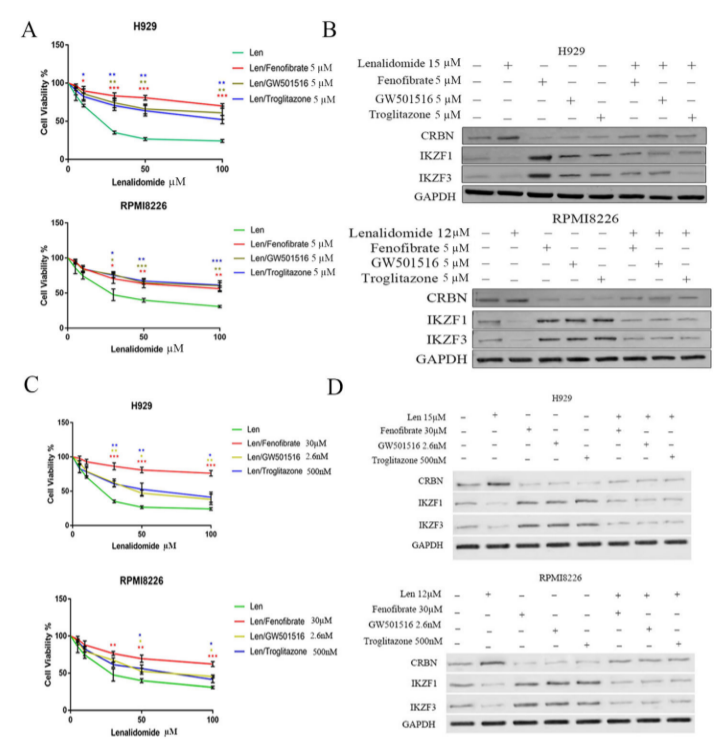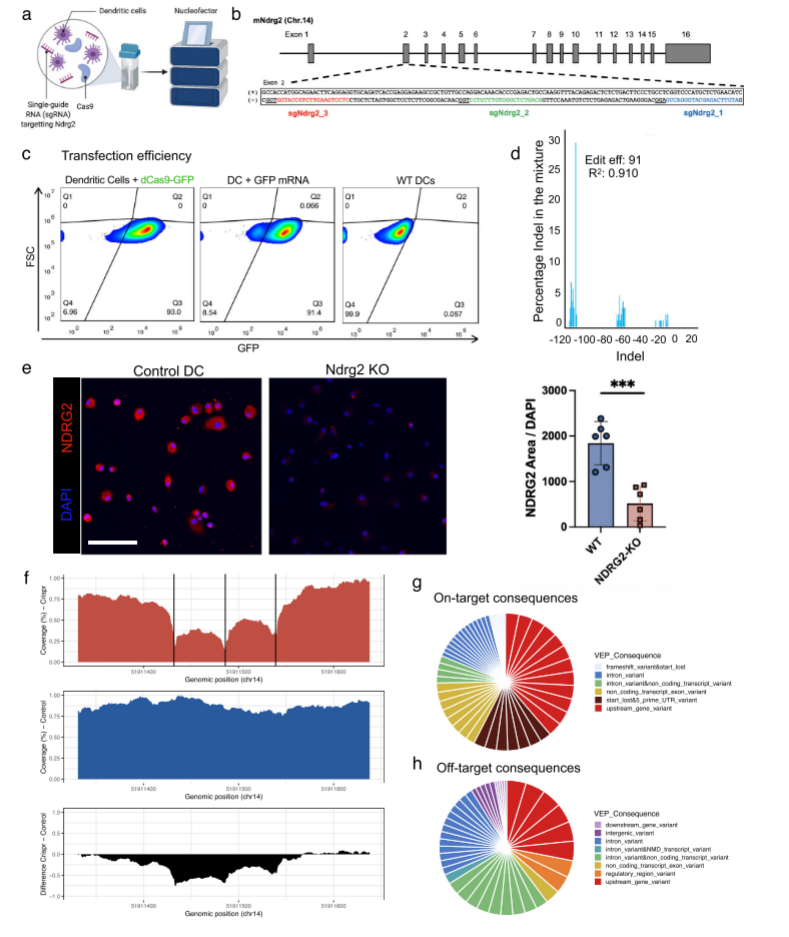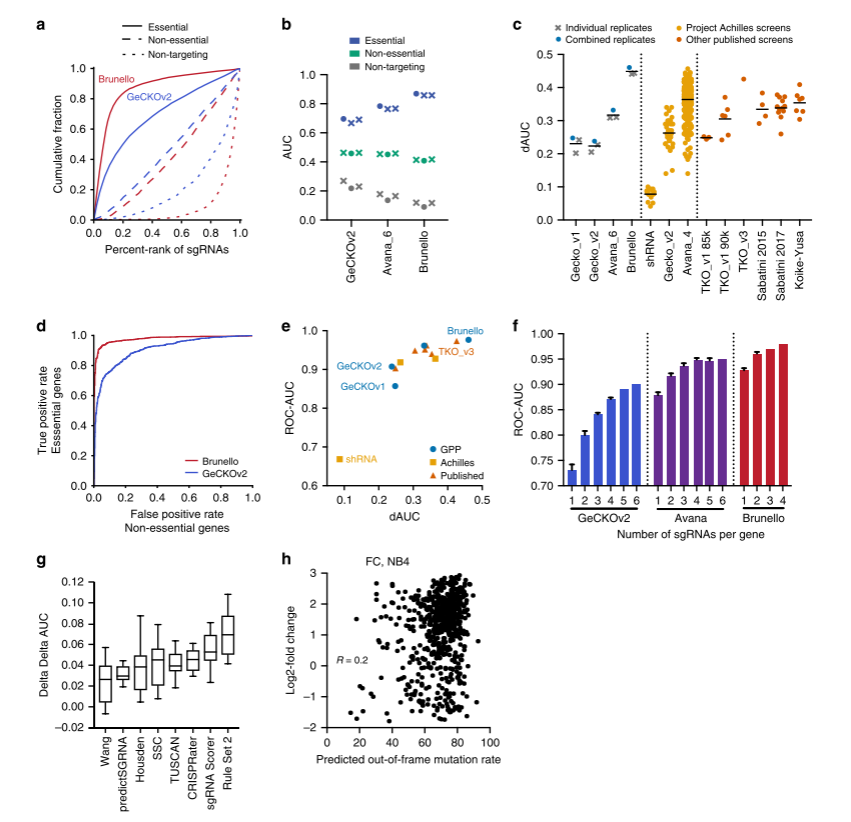[MAR Bestselling] CRBN and Myc knockout cell lines; CRISPR whole genome library
Gene knockout is an effective strategy to study the function of a gene, and the biological function of the gene is investigated by comparing the changes in cell phenotype, function and structure after knockout. CRISPR library screening is a high-throughput genetic screening method based on CRISPR/Cas9 technology by constructing libraries containing thousands of sgRNAs and cloning these sgRNAs into lentiviral vectors to infect the target cells at a low MOI. This approach ensures that each cell is infected by only one sgRNA, thus enabling functional screening against genes corresponding to different sgRNAs. In this article, we recommend the two best-selling knockout cells and a pre-made library, with relevant research literature interpretation. Hope this could inspire your research!
CRBN KO Cells Reveal Links Between PPAR and Anti-myeloma Activity of Immunomodulators
Multiple myeloma (MM) is a common hematologic malignancy that requires lifelong treatment in most patients. Immunomodulators (IMiDs) are the cornerstone of the treatment of MM, with lenalidomide being the most commonly used IMiD. However, little is known about the impact of combining PPAR agonists with IMiDs on MM treatment.
Researchers used CRISPR/Cas9 technology to generate CRBN (cereblon) knockout MM cell lines, and by comparing the response to lenalidomide between CRBN knockout and wild-type cells, the researchers determined the criticality of CRBN in attenuating the effects of lenalidomide by PPAR agonists, revealing that PPAR agonists attenuate the antimyeloma effects of lenalidomide by reducing CRBN expression to attenuate the antimyeloma effect of lenalidomide, which provides mechanistic insights into understanding the interaction between the two drugs. CRBN cell line reveals how PPAR agonists modulate the efficacy of IMiDs by affecting CRBN expression, which could help guide clinicians to make more informed decisions about the use of lenalidomide and PPAR agonists in combination therapy.

Fig 1. The importance of CRBN in the attenuation of lenalidomide effects by PPAR agonists
CRISPR/Cas9-Mediated Myc KO Cells Contributes to Development of Chronic Wound Therapy
Chronic wounds place a significant burden on patients. While treatments such as skin grafts or tissue-engineered skin substitutes have been helpful in clinical practice, they usually require surgical intervention and often fail in the treatment of complex wounds in patients with diabetes and peripheral vascular disease (PVD). Researchers attempt to seek to develop new treatments to improve healing rates of chronic wounds and reduce the associated healthcare burden.
By deleting the N-myc regulatory gene 2 (Ndrg2) through CRISPR/Cas9 technology, researchers altered the transcriptomic profile of dendritic cells, allowing these cells to remain in an immature cellular state. The Ndrg2 knockout dendritic cells exhibited enhanced pro-angiogenic properties, which contributed to the formation of new blood vessels, improved blood supply to the wound, and accelerated wound healing. Myc knockout cell line shows remarkable potential in promoting wound healing, which provides a scientific basis for the development of new therapeutic strategies and may have a significant impact on the treatment of chronic wounds.

Fig 2. N-myc knockout promotes non-diabetic wound healing
CRISPR Genome Wide Knockout Library Helps Optimize Gene Function For Systematic Studies
Although CRISPR library screening technology has a wide range of application prospects, it still faces some challenges in practical application. How to accurately and efficiently select and design target genes and how to evaluate the effects of gene editing are key issues that researchers need to address.
The researchers performed 14 screening experiments on three optimized CRISPR libraries targeting the human genome, CRISPRko, CRISPRi, and CRISPRa, and used the dAUC (delta area under the curve) metric to assess the performance of the optimized libraries, including the ability to detect both essential and non-essential genes, and the ability to identify specific drug resistance genes in a forward selection screen. The results showed that the optimized CRISPRko libraries outperformed previously published CRISPRko libraries at both the sgRNA and gene levels; the CRISPRi libraries performed comparably to, and in some cases exceeded, existing CRISPRko libraries using fewer sgRNAs per gene; and the CRISPRa libraries performed well in the forward selection screen in which the performance was excellent. The results demonstrate the importance of optimizing library design for improving the quality of CRISPRko, CRISPRi and CRISPRa gene screens. In this experiment, the optimized CRISPR whole-genome knockout library used fewer sgRNAs per gene, providing more information with limited resources, helping researchers identify the differences between knockout and knockdown (CRISPRi), and providing a deeper understanding of gene function and cell biology.

Fig 3. Validation of genome-wide knockout library for high efficiency and accuracy in genome-scale screening
EDITGENE offers 3800+ pre-made knockout cells, GLP1R, CTNNB1, and PKM KO cell lines are available in-stock. Pre-made KO cells deliver in 1 week, only $1800. Explore our KO list now
Recent blogs
[Research Frontier] New trends in CRISPR-- Kras, NLRP3 and BRAF knockout cell lines
[Advanced Materials] Cas13 provides a new strategy for immunotherapy of tendon injuries
[Nature] CRISPR Point Mutation Cells Help Deep Whole-genome Analysis

